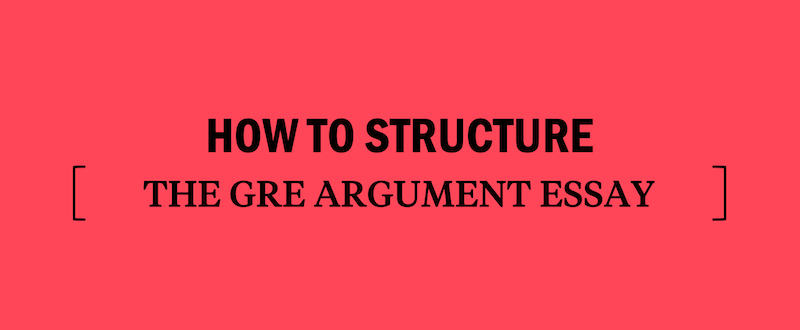GRE Issue Writing Task: Use What You Know
Admittedly, the toughest part of the Issue Task is coming up with ideas that you’re confident in. You might think that, with the 200+ topics available, you’ll have to read an encyclopedia, scour the newspaper, dust off an old history book, and exhume those half-read classics from high school English. But the ETS doesn’t expect this from you. Though it seems certain issue prompts necessitate a thorough knowledge in some particular area, such is not the case. Students from all kinds of backgrounds take the GRE; a chemistry student isn’t expected to know Shakespeare, and an English student isn’t expected to understand hydrogen bonding. Still, if you come across a prompt that could benefit from your expertise, by all means go for it.
Sample Prompt
Let’s look at a relatively esoteric issue prompt and explore varying avenues of analysis, some appropriate for the expert and others for the layman:
What we have here is a veritable breath of fresh air for any humanities or arts major, but it’s a kiss of death for anybody without a predilection for the arts. In fact, I want to offer an often unheeded caveat for those art lovers: don’t get too excited. If you come across a topic that allows you to exploit your studies, don’t reproduce your senior thesis in 45 minutes. In other words, keep in mind that your readers may not be conversant with your academic discipline, so try to temper your genius, as hard as that may be.
The above prompt is a somewhat confusing question, so let’s simplify it: do the arts always reflect social ideas? That is, is the aim of art to reflect and comment on society? Let’s look at some ideas from different perspectives:
The Layman Approach
If you’re not an art lover or humanities major, you may be worried by such a prompt; you may, in fact, be searching your brain for any example of art you know something about. This is probably a fruitless strategy. Why not take a step back and think about the kinds of art you could talk about. The examples do not have to be in-depth analyses of the Renaissance masters–just use what you know. Each point will be labeled “agree” or “disagree” to indicate whether the example is for or against the speaker.
- Agree: Ancient and Renaissance architectures were often constructed to honor gods and provide an appropriate place of worship, thereby reflecting the pervasive religious fervor in their respective societies.
- i. The Parthenon, the pyramids, the great European cathedrals
- Agree: Skyscrapers built in urban metropolises in the 20th century reflect the zeitgeist of technological progress.
- Agree: Medieval and Renaissance painting was heavily religious, so as to reflect the core societal values of the age.
- Disagree: In twentieth century painting, however, we see a retreat from societal representation to more idiosyncratic aesthetics. Art becomes less mimetic and more cerebral, or, in some instances, visceral.
- i. Pollock’s technique–violently splattering paint on the canvas–can be viewed as a purely visceral impulse; the mess of paint evokes the image of the action of painting, thereby referring to itself as art rather than commenting on or exhibiting any societal impulse.
If you have some knowledge of art history or literature, you can certainly use that here. Certain artistic movements are known for social commentary while others are famous for eschewing it, or at least aspiring to something greater than it.
- Agree: Victorian Literature
- i. In Victorian fiction, for example, authors like Jane Austen and George Eliot strive to replicate realistic social scenarios, e.g. courtship and the social practices of marriage, in order to comment on and often critique social mores. Austen’s Pride and Prejudice often elucidates the societal emphasis on marrying for status and financial security rather than marrying for love.
- Agree: Dystopian Fiction:
- i. Dystopian novels like 1984 make explicit the fears of totalitarian governments that were in power at the time, thereby reflecting the psychosocial consciousness of the time.
- Disagree: Modernism
- i. Modernists aspire to more than social commentary; most critics of the movement agree that one philosophical project of modernism is to isolate the form of art and the form of the medium, that is, to draw attention to the process and materials of artistic composition.
- ii. T.S. Eliot’s The Wasteland, for example, is a complex and ostensibly chaotic mishmash of historical literary styles and references. Indeed, the poem comments on the current zeitgeist, but its method in doing so recapitulates a history of the medium to draw attention to its status as an artwork.
- iii. James Joyce’s Ulysses, often considered the quintessential modernist novel, follows a similar ambition. Each chapter of the novel exhibits a markedly different style and theme, all the while corresponding to a specific episode from Homer’s great epic poem The Odyssey. In fact, one particular chapter changes its style paragraph by paragraph, illustrating a detailed history of the development of English.
While the “expert” essay has more complex and esoteric examples, both essays include logical arguments with sufficient evidence. The Issue topic is always about using what you know and making sense of it.
In your essay practice, try to use the knowledge that you already have rather than cram for new material. However, if there is a specific area in which you are particularly lacking, brush up on some new info, and then try some prompts where you can use what you learned.


